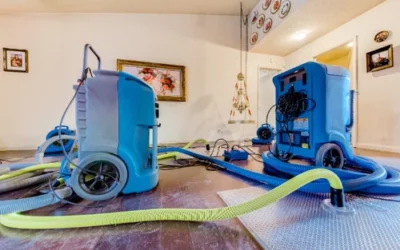Passive Income with BizOp Programs: Fact or Fiction?

In a world driven by financial freedom and flexible lifestyles, the concept of passive income has become a buzzword among aspiring entrepreneurs and side hustlers. One of the most popular gateways to this dream is through bizop programs—short for “business opportunity” programs. These offerings promise a quick, often simplified path to earning money with minimal effort. But do these claims hold water, or are they just cleverly packaged fiction? bizop.org To find the truth, we need to dissect what bizop programs really are, how they function, and whether they can reliably generate passive income.
What Are BizOp Programs, and Why Are They So Popular?
Bizop programs are essentially pre-packaged business opportunities. They’re marketed as ready-made systems or models that individuals can plug into with little to no prior experience. These may include affiliate marketing systems, dropshipping stores, automated e-commerce platforms, digital franchises, or MLM (multi-level marketing) opportunities. The main allure is simplicity: invest a certain amount, follow a proven formula, and watch the income roll in. For people who don’t have time to start a business from scratch or lack expertise, this sounds like a dream come true.
The popularity of bizop programs has surged due to a combination of economic uncertainty, remote work trends, and the desire for more control over personal income. Influencers on social media often showcase glamorous lifestyles allegedly funded by bizop ventures, further fueling the appeal. People see flashy ads promising “$10,000 a month while you sleep” and are naturally drawn in. However, this is where it’s crucial to distinguish between legitimate business models and those that simply capitalize on people’s financial hopes.
The Passive Income Myth: How Real is the Promise?
The term “passive income” often gets thrown around loosely in bizop marketing. True passive income, by definition, is money earned with little to no daily effort after an initial setup. Think real estate rental income or stock dividends. In contrast, most bizop programs require consistent action, especially at the beginning. You may have to manage ads, respond to customer inquiries, track conversions, or build and maintain a sales funnel.
Many programs that advertise passive income actually involve semi-active income streams. For example, affiliate marketing via a bizop system may not require physical inventory, but it does demand constant traffic generation, SEO work, or social media engagement to maintain sales. The automation component—often hyped as the main selling point—rarely eliminates human input altogether. In fact, programs that are completely “hands-off” are more likely to fail without constant monitoring and optimization.
That said, once a bizop model is fully set up, optimized, and if the market remains stable, it can generate semi-passive income. But reaching that point often takes weeks or even months of active work, learning, and adjustments. Passive income is not fiction—but the “get-rich-quick” version of it that’s commonly tied to bizop promotions often is.
Identifying Legitimate BizOp Opportunities
Not all bizop programs are scams or misleading. There are genuine platforms that offer structured paths to building online businesses or income-generating assets. The key is knowing what to look for. A legitimate bizop opportunity will provide full transparency: clear business models, realistic income disclosures, customer support, training, and often some form of refund policy. Red flags include vague promises, aggressive upselling, and testimonials that feel too polished or exaggerated.
One example of a legit bizop approach could be an affiliate marketing platform that teaches users how to build niche websites and provides tools like landing page builders and tracking software. Another could be a white-label e-commerce store that allows you to sell customizable products without inventory. These models can evolve into passive or semi-passive income over time, but only if the buyer commits to learning and applying the skills consistently.
Another critical aspect is the cost. Many bizop programs have high initial buy-ins—sometimes thousands of dollars—under the promise that the return will be exponentially higher. While investment is normal in business, users should carefully weigh the ROI potential and the timeline involved. No bizop can guarantee success, and anyone promising otherwise should be viewed with caution.
The Role of Education and Skill in Making BizOps Work
A major factor that separates fact from fiction in the bizop world is education. Many people jump into bizop programs thinking they are shortcutting the learning curve, but in reality, they are simply postponing it. Whether it’s learning how to generate leads, understanding analytics, or running Facebook ads, skill development is essential. Bizop platforms that provide real, applicable training tend to produce better results than those that focus purely on hype.
Treating a bizop like a real business rather than a passive income hack is the mindset shift needed for success. Instead of asking, “How soon can I make money while doing nothing?” it’s better to ask, “How can I build a system that works for me over time?” Those who invest in their own education—through courses, mentorship, or simply trial and error—are more likely to see their bizop turn into a source of reliable income.
Moreover, the digital world evolves fast. Platforms change their algorithms, customer behaviors shift, and competition increases. Keeping up with these changes is crucial, even in a so-called “passive” bizop system. The most successful individuals often spend time refining their approach long after the initial setup.
Conclusion: BizOp and Passive Income — A Reality Check
So, is passive income through bizop programs fact or fiction? The answer lies somewhere in between. While the dream of earning money while you sleep is not entirely unfounded, the road to achieving it through bizop programs is rarely as effortless as advertised. Many opportunities require substantial effort, learning, and persistence before any kind of passive or semi-passive income kicks in. The bizop model is not inherently flawed—it’s the unrealistic expectations that often set people up for disappointment.











